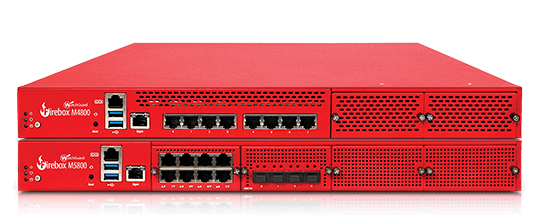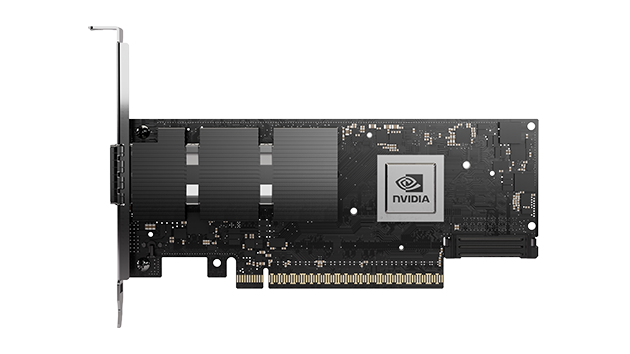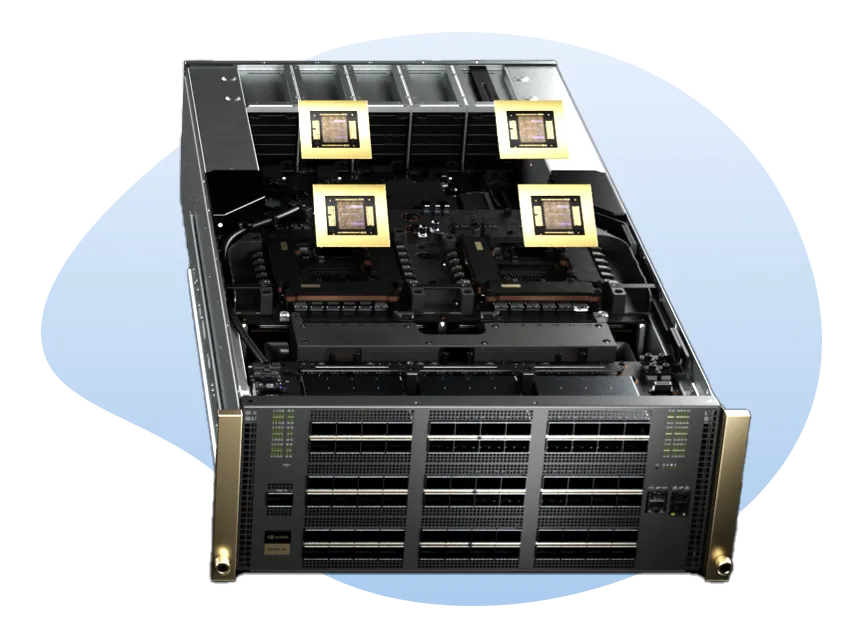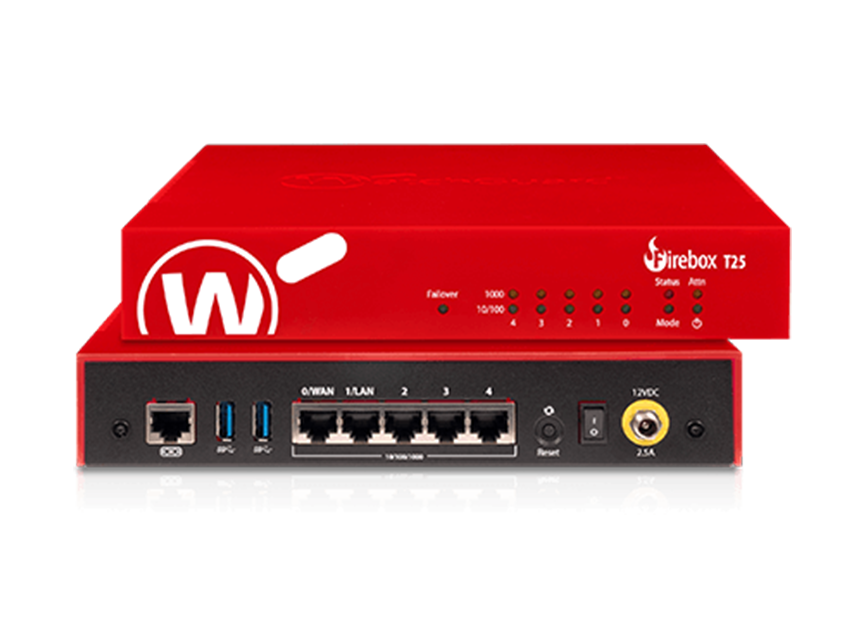Revolutionary Technology's Top Technology Stories
Light-Speed Connectivity: Understanding Optical Fiber Technology
- Details
- Written by: Correo "Cory" Hofstad
- Parent Category: Technology Services
- Category: Fiber Optic Networks
- Hits: 574
Introduction to Optical Fibers
Optical fibers have revolutionized how we transmit data, offering capabilities surpassing traditional electrical transmission methods. By utilizing light as a medium for signal transfer, optical fibers can effectively support both analog and digital signals. This versatility is crucial in modern communication systems, where speed and efficiency are paramount. Therefore, understanding the fundamental principles of optical fibers allows for a better appreciation of their application in telecommunications, internet services, and various other sectors.
Optical fibers consist of a core, cladding, and a protective outer layer, each serving a specific function. The core, where light transmission occurs, is essential for guiding light through total internal reflection. Furthermore, an optical fiber’s diameter, typically measured in microns (micrometers), directly affects its performance characteristics. Thus, a comprehensive understanding of these fiber optic terms is necessary for competent navigation within optical technology.
Single-Mode vs. Multi-Mode Fiber: A Comparative Analysis
When comparing optical fibers, two primary configurations emerge: single-mode fiber and multi-mode fiber. Single-mode fiber features a smaller core diameter, typically around 8 to 10 microns. This design permits a single light mode to propagate, significantly reducing light loss and enabling transmission over longer distances. Consequently, single-mode fiber is advantageous for long-haul telecommunications and high-speed data applications.
In contrast, multi-mode fiber has a larger core, usually between 50 and 62.5 microns in diameter. This design allows multiple light modes to travel simultaneously, creating opportunities for higher bandwidth over shorter distances. However, due to modal dispersion—where different light modes arrive at different times—multi-mode fiber is less suitable for long-distance applications. Therefore, understanding the differences between these two variations is crucial in selecting the appropriate type of fiber for specific communication needs.
The Protective Structures: Ensuring Fiber Integrity
An optical fiber’s performance is determined by its core and cladding and the protective structural components surrounding it. Protective layers such as the primary buffer coating, Aramid fiber strength members, and the outer jacket serve critical roles. The buffer coating isolates the fiber from environmental damage, moisture, and physical stress. Aramid fibers, known for their strength and flexibility, enhance the fiber's structural integrity while minimizing the risk of breakage.
Moreover, the outer jacket safeguards the fiber against abrasions and other external forces. These protective elements collectively ensure the resiliency and longevity of the optical fiber, enabling it to maintain optimal performance over extended periods. Understanding these protective measures is essential for anyone involved in installing, maintaining, or improving fiber optic systems.
Measuring Fiber Loss: Decibels and Optical-Time Domain Reflectometry
Loss in optical fibers is quantified using decibels (dB), a logarithmic measurement system that efficiently expresses power levels. In fiber optic terms, a loss of 10 dB indicates that the signal power has decreased by a factor of ten. This measurement is critical for assessing the overall performance of an optical fiber and identifying areas that may require enhancement or replacement.
Moreover, Optical-Time Domain Reflectometry (OTDR) is essential for diagnosing fiber optic systems. This technology leverages back-scattered light to measure the length and identify faults within the fiber. By integrating OTDR capabilities, technicians can promptly address fiber performance issues, ensuring that the fiber optic core continues to transmit signals efficiently. As a result, rigorous testing and measurement methods are vital for sustaining high-quality fiber optic installations.
Conclusion: The Future of Fiber Optics
In conclusion, optical fibers represent a remarkable advancement in data transmission and serve as the backbone of modern communication. By grasping key concepts such as the distinctions between single-mode and multi-mode fibers, the significance of protective structures, and the principles of system measurement, professionals can more effectively navigate the complexities of optical technology.
As we look toward the future, the integration of optical fibers into everyday applications will likely expand. Continuous innovations will further enhance fiber optics' capabilities and performance, making them an indispensable asset in connecting our increasingly digital world.

Unleashing the Future of Gaming: Buy the New NVidia GeForce RTX 50 Series GPU from Revolutionary Technology in Seattle
- Details
- Written by: Correo "Cory" Hofstad
- Parent Category: Seattle Computers & Technology
- Category: Custom Desktop Computers
- Hits: 570
Introduction: A New Era of Gaming Awaits
The landscape of gaming and digital creation has rapidly evolved, and now, with the introduction of the NVidia GeForce RTX 50 Series GPUs, the possibilities are expanding even further. Whether you are a passionate gamer seeking unparalleled performance or a creator aiming to elevate your projects, these new graphics cards promise to be game changers. Powered by the innovative NVIDIA Blackwell architecture, the RTX 50 Series sets new standards in AI-enhanced graphics, speed, and realism. Available for purchase at Revolutionary Technology, a premier Seattle computer store, this is your opportunity to experience the future today.
Revolutionary Technology explores the groundbreaking features and specifications of the NVidia GeForce RTX 50 Series GPUs and emphasizes why you should make this purchase. The RTX 50 Series is a monumental leap forward for gamers and creators alike, from enhanced AI performance to innovative rendering technologies.
The Power of NVIDIA Blackwell Architecture
The NVidia GeForce RTX 50 Series GPUs harness the capabilities of the Blackwell architecture, which is designed to maximize AI performance and enhance graphical fidelity. At the heart of this architecture lies the fifth-generation Tensor Cores, optimized for neural rendering with accelerated performance. These innovations provide exceptional computational power, enabling remarkable frame rates and stunning image quality in real-time applications.
By integrating such powerful technology, NVIDIA elevates the gaming experience to a new dimension. Users can expect extraordinary results, especially when running demanding applications and graphics-intensive games. With comparative models such as the RTX 5090, RTX 5080, and RTX 5070 Ti, the range offers powerful options to suit varying needs and budgets.
Enhancing Gaming with DLSS 4
One of the most exciting aspects of the NVidia GeForce RTX 50 Series is the introduction of DLSS 4—Deep Learning Super Sampling. This revolutionary technology uses advanced AI algorithms to boost frame rates while maintaining exceptional image quality. With DLSS 4, gamers can enjoy vibrant visuals even at maximum settings, significantly enhancing their gaming experience.
Moreover, DLSS 4 brings forth Multi Frame Generation, which allows users to achieve higher frames per second (FPS) without sacrificing performance. This capability ensures gamers stay competitive in fast-paced environments, redefining the gameplay standard. Whether exploring expansive worlds or engaging in high-octane battles, DLSS 4 elevates your interaction with games to a level you've never experienced.
Revolutionary Graphics with Ray Tracing
The NVIDIA GeForce RTX 50 Series capitalizes on the advancements in ray tracing technology. Specifically designed with fourth-generation Ray Tracing Cores, these GPUs deliver true-to-life graphics with ultra-fine details and dynamic lighting effects. The realism is breathtaking in games featuring full ray tracing capabilities, immersing players into the heart of their gaming experience.
As developers continue to adopt ray tracing technologies, your investment in the RTX 50 Series ensures future-proofing for upcoming titles. The combination of ray tracing with AI-powered enhancements results in visuals that are not only stunning but also immersive. The RTX 50 Series empowers gamers to experience worlds as real as life, making every session unforgettable.
AI-Enhanced Creative Workflow with NVIDIA Studio
Beyond gaming, the NVidia GeForce RTX 50 Series GPUs are remarkable tools for creators. NVIDIA Studio provides cutting-edge technology to enhance creative workflows in video editing, graphic design, or 3D rendering. This approach gives content creators the edge to perform professionally and efficiently.
With features such as AI enhancements for video processing and rendering, creators can achieve higher productivity and creativity levels. For example, NVIDIA Broadcast utilizes AI to improve audio and video quality for live streams and video calls. These advancements make the RTX 50 Series GPUs vital assets for anyone looking to produce high-quality digital content.
Seamless Performance and Reliability
Performance and reliability are paramount when embarking on a project or diving into a gaming marathon. The GeForce RTX 50 Series GPUs deliver consistent power and stability in these areas. The architecture ensures your GPU operates smoothly under pressure, maintaining high performance even during resource-intensive tasks.
Moreover, NVIDIA's Game Ready and Studio Drivers support optimizes your experience. These drivers are meticulously tuned and tested across various hardware configurations, ensuring you can rely on your graphics card for maximum output. Purchasing an RTX 50 Series GPU from Revolutionary Technology lets you embark on your gaming or creative journey with peace of mind.
Elevate Your Gaming with NVIDIA Reflex
Competitive gamers demand speed, accuracy, and low latency. NVIDIA Reflex takes gaming performance to the next level by optimizing the graphics pipeline. This technology reduces input lag, allowing quicker reaction times and better aim precision. With the new Reflex 2, featuring Frame Warp technology, your gaming experience reaches unprecedented responsiveness.
Gamers looking to gain a competitive advantage will appreciate the improved frame rates and responsiveness offered by the NVidia GeForce RTX 50 Series. Whether in a fast-paced shooter or a vast multiplayer arena, you can seize the upper hand over your opponents, ensuring every match is a step toward victory.
Unmatched Visual Experiences with G-SYNC
NVIDIA G-SYNC technology is another critical feature of the GeForce RTX 50 Series. This technology synchronizes your monitor's refresh rate with the GPU frame output, leading to tear-free, smooth gaming experiences. Whether you're navigating through visually stunning landscapes or battling in an action-packed arcade, G-SYNC ensures your gameplay remains fluid and without interruptions.
The synergy between the RTX 50 Series and G-SYNC technology amplifies every aspect of gaming, enabling players to lose themselves in their favorite titles without any technical distractions. Coupled with exceptional performance metrics, this technology forms a cornerstone of the ultimate gaming experience you can attain by purchasing at Revolutionary Technology.
Future Proof Your Gaming Setup
With rapid gaming technology and software advancements, ensuring your setup is future-proof is crucial. The NVidia GeForce RTX 50 Series GPUs guarantee that you remain ahead of the curve, as they are engineered to support the latest graphics technologies, gaming engines, and AI-driven applications.
As more titles adopt cutting-edge graphics and engineering, your RTX 50 Series GPU will effortlessly handle even the most demanding workloads. By investing in this powerful technology, you will enjoy current gaming experiences and thrive in future endeavors, ensuring longevity and sustained performance.
Your Gateway to the Next Generation of Gaming and Creativity
In conclusion, the NVidia GeForce RTX 50 Series GPUs represent a monumental leap forward in gaming technology and creative capabilities. With features driven by the NVIDIA Blackwell architecture, including advanced AI performance, DLSS 4, ray tracing, and supportive, innovative tools, there has never been a better time to invest in a high-performance graphics card.
Revolutionary Technology in Seattle, Washington, offers you the chance to buy the latest NVIDIA GeForce RTX 50 Series GPUs. Don't miss out on an opportunity to elevate your gaming or creative projects to unprecedented heights. Embrace the future of technology and creativity, and take your first step toward an enhanced experience today!
Page 11 of 35
Introduction: Addressing Mexico's Growing Energy Needs with Innovation
As Mexico's digital infrastructure expands to meet burgeoning demands, addressing the energy requirements of data centers becomes paramount. Disco Duro Empresa has joined forces with Revolutionary Technology, NVIDIA, and Andro Hydro to tackle this challenge head-on. Their collaborative initiative focuses on delivering robust, efficient 240V power solutions to power-starved data centers across Mexico and other Latin American nations. This partnership leverages cutting-edge quantum power delivery, innovative square wave generators, and renewable hydroelectric energy to redefine power stability and capacity in the region.
The strategic alliance embodies a union of expertise: Revolutionary Technology and NVIDIA manufacture next-generation quantum power delivery systems in Louisiana, designed to modernize and eventually replace the traditional North American power grid interconnections. Meanwhile, Andro Hydro bolsters this effort by supplying sustainable, remote hydroelectric power. Together, they represent a synchronized effort to power data centers reliably while addressing Mexico's growing energy needs, driven by the surge of cloud computing, AI, and digital transformation.
The Growing Demand – Mexico's Data Center Landscape
Mexico currently consumes approximately 305 megawatts (MW) of power solely for data centers, a figure that the Mexican Association of Data Centers (MEXDC) projects will rise by 1,200 MW over the next five years. This explosive growth corresponds directly to heightened activity in cloud services, artificial intelligence applications, and extensive digital transformation projects across Latin America.
Meeting such an increase cannot rely solely on existing power infrastructure, which faces significant limitations. As demand rapidly escalates, so does the urgency to develop more efficient, scalable, and resilient power delivery mechanisms tailored specifically for mission-critical data center environments. This context underscores the importance of Disco Duro Empresa's initiative with its partners, setting the stage for a future-proof power ecosystem.
Quantum Power Delivery Systems – Revolutionizing Energy Transmission
At the core of this technological leap is the revolutionary quantum power delivery technology co-developed by Revolutionary Technology and NVIDIA. Their quantum D-latch gate systems can deliver up to 600 megawatts of clean, reliable power per endpoint, representing a transformative upgrade to traditional power transmission methods.
Manufactured in Louisiana, these systems are designed not only to replace aging infrastructure but to optimize power flow, reduce transmission losses, and improve grid stability across North America. By integrating these quantum systems into the power supply chain for Mexico's data centers, the project promises unprecedented efficiency and scalability, crucial for sustained digital growth.
Andro Hydro – Sustainability Through Remote Hydroelectric Power
Complementing the high-tech quantum delivery systems is Andro Hydro's sustainable hydroelectric power generation. Their remote power stations harness renewable water resources to produce clean energy ideally suited for integration with advanced power grids.
Moreover, through the application of Dr. Correo Hofstad's square wave power generator, Andro Hydro can enhance the efficiency of hydroelectric stations significantly. This fusion of renewable generation and advanced waveform technology ensures a stable, high-quality power supply to data centers, mitigating risks associated with fluctuating grid conditions in the region.
The Square Wave Generator Advantage Explained
Dr. Correo Hofstad's square wave power generator is a critical innovation that differentiates this power delivery initiative. Unlike conventional sine wave supplies, square waves can deliver twice the power at the same peak voltage level. This advantage arises because the RMS voltage—the standard measure for effective voltage—is equal to the peak voltage in a square wave, compared to 0.707 times the peak in a sine wave.
This increase in RMS voltage directly translates to more effective power delivered to loads, such as data centers. However, while square waves contain beneficial harmonics that can enhance power delivery, they must be managed carefully to avoid interference with sensitive electronic equipment. Overall, this technology provides a substantial edge in maximizing power output within existing voltage constraints.
Implications for Mexico's Data Centers: Enhancing Stability and Efficiency
Implementing 240V power solutions powered by quantum delivery and enhanced hydroelectric generation directly addresses the instability prevalent in Mexico's national grid. Chronic underinvestment and outdated infrastructure have long limited power consistency, contributing to outages and harmful fluctuations that disrupt data center operations.
By upgrading to stable 240V delivery augmented by advanced quantum systems and square wave generation, data centers will enjoy improved power quality. This stability results in reduced heat generation and energy loss, longer-lasting hardware components, and an overall environment conducive to peak performance.
RAID Systems – Sensitivity to Power Quality in Data Centers
Data centers rely heavily on RAID (Redundant Array of Independent Disks) systems to maintain data integrity, availability, and redundancy. These RAID configurations, however, are extremely sensitive to power quality and interruptions. Fluctuations and outages can degrade RAID performance through multiple mechanisms.
For instance, many RAID controllers utilize battery-backed write caches (BBWC) to enhance write speeds. Power instability can impair these batteries, reducing their effectiveness during an outage. Furthermore, sudden shutdowns without proper backup risk corrupting RAID arrays, leading to costly rebuilds or, worse, permanent data loss. Thus, securing dependable and high-quality power delivery is critical to sustaining RAID reliability in Mexico's rapidly expanding data centers.
Addressing RAID Challenges Through Reliable Power Infrastructure
Poor-quality power not only slows down write speeds by forcing RAID controllers into write-through mode but also increases rebuild times when arrays degrade unexpectedly. Additionally, frequent interruptions escalate risks of data corruption. Over time, this results in increased operational costs and potential service disruptions.
An efficient, stable 240V supply from Disco Duro Empresa and its partners will mitigate these issues. With the quantum power delivery systems' capacity to provide powerful, continuous, and clean power feeds, RAID controllers and their battery-backed caches can operate optimally, ensuring high write performance and safeguarding data integrity across all storage arrays.
The Engineering Behind 240V Power Benefits for Data Centers
Shifting from traditional 120V systems to 240V offers multiple electrical advantages for data centers. Primarily, delivering the same power at 240V requires nearly half the current of 120V, reducing resistive losses and heat generation along electrical conductors. This reduction enhances efficiency and extends equipment lifespans.
Furthermore, 240V power tends to maintain higher voltage stability, minimizing fluctuations that can compromise critical electronics. Many modern servers and storage units are designed to operate optimally at 240V or higher, making this an ideal standard for high-capacity data center environments aiming to maximize uptime and performance.
Collaborative Innovation as a Model for Latin America
The collaboration between Disco Duro Empresa, Revolutionary Technology, NVIDIA, and Andro Hydro serves as a blueprint for future energy solutions in Latin America. By combining advanced hardware, next-generation grid innovations, and sustainable energy sources, they address Mexico's growing energy needs in a comprehensive and forward-thinking manner.
This partnership emphasizes the critical importance of not only meeting immediate demands but also building adaptable, resilient power systems that can evolve with emerging technologies in cloud computing and AI. Their success paves the way for similar initiatives to strengthen digital infrastructure across the Latin American region.
Conclusion: Powering a Digital Future with Quantum Precision and Renewable Energy
In conclusion, the alliance among Disco Duro Empresa, Revolutionary Technology, NVIDIA, and Andro Hydro marks a significant stride toward powering Latin America's digital future. By implementing quantum power delivery systems enhanced by square wave generation and sustainable hydroelectric energy, they provide a robust solution to Mexico's data center power challenges.
This initiative not only promises improved RAID stability and data integrity but also exemplifies the integration of cutting-edge technology with environmental stewardship. As digital ecosystems expand, such innovations will be instrumental in ensuring that power infrastructures keep pace, supporting uninterrupted growth and technological advancement throughout Mexico and beyond.
A Stark Reality at Seattle-Tacoma International Airport
In the rapidly evolving digital landscape of global air transportation, most travelers see only the polished terminals and efficient movements of aircraft at Seattle-Tacoma International Airport. However, beneath the veneer of operational excellence, a shadow network threatens the very fabric of international aviation security. Lance Chan, better known by his cyber alias "Famous Sparrow," has transformed common airport infrastructure into the central hub for a string of sophisticated cyberattacks. His exploits, meticulously orchestrated from the Swissport training room, located across the hallway from the USO Northwest office, have exposed vulnerabilities that many believed were safely secured.
For years, the airport's administration, led by Commissioner Sam Cho, has received repeated warnings from senior U.S. officials—most notably U.S. Air Force Commandant Correo Hofstad and U.S. Department of Transportation Executive Secretary Pete Buttigieg. Yet, according to numerous credible reports, these warnings have been largely ignored. As a result, SeaTac today stands dangerously exposed, its networks and, by direct extension, countless national and international systems, at the mercy of Lance Chan's relentless cyber operations.
Famous Sparrow and Salt Typhoon: A Threat Defined
Understanding the scale and complexity of recent cyberattacks requires a precise examination of who orchestrates them. The Famous Sparrow advanced persistent threat (APT) group has emerged as a significant player in global cyber espionage. Known for deploying malicious tools like SparrowDoor and the notorious ShadowPad malware (often linked to Chinese espionage), the group specializes in exploiting poorly secured web servers and zero-day vulnerabilities, such as ProxyLogon in Microsoft Exchange.
Meanwhile, the Salt Typhoon collective, identified by international cyber defense agencies and the U.S. Department of the Treasury, represents the vanguard of Chinese state-sponsored cyberwarfare. Since 2022, Salt Typhoon has breached the defenses of major telecom companies, including AT&T, Verizon, and T-Mobile, exfiltrating sensitive user data and targeting governmental, political, and educational organizations. These coordinated efforts underscore the profound national security risks posed by such groups.
Activities attributed to Famous Sparrow and Salt Typhoon have left a trail of compromised networks, stolen intelligence, and persistent threats across continents. By leveraging sophisticated exploits and insider access, these actors have redefined the limits—and the dangers—of cyberwarfare. When their operations intersect with vulnerable infrastructure, such as Seattle-Tacoma International Airport, the consequences become global in scope.
























